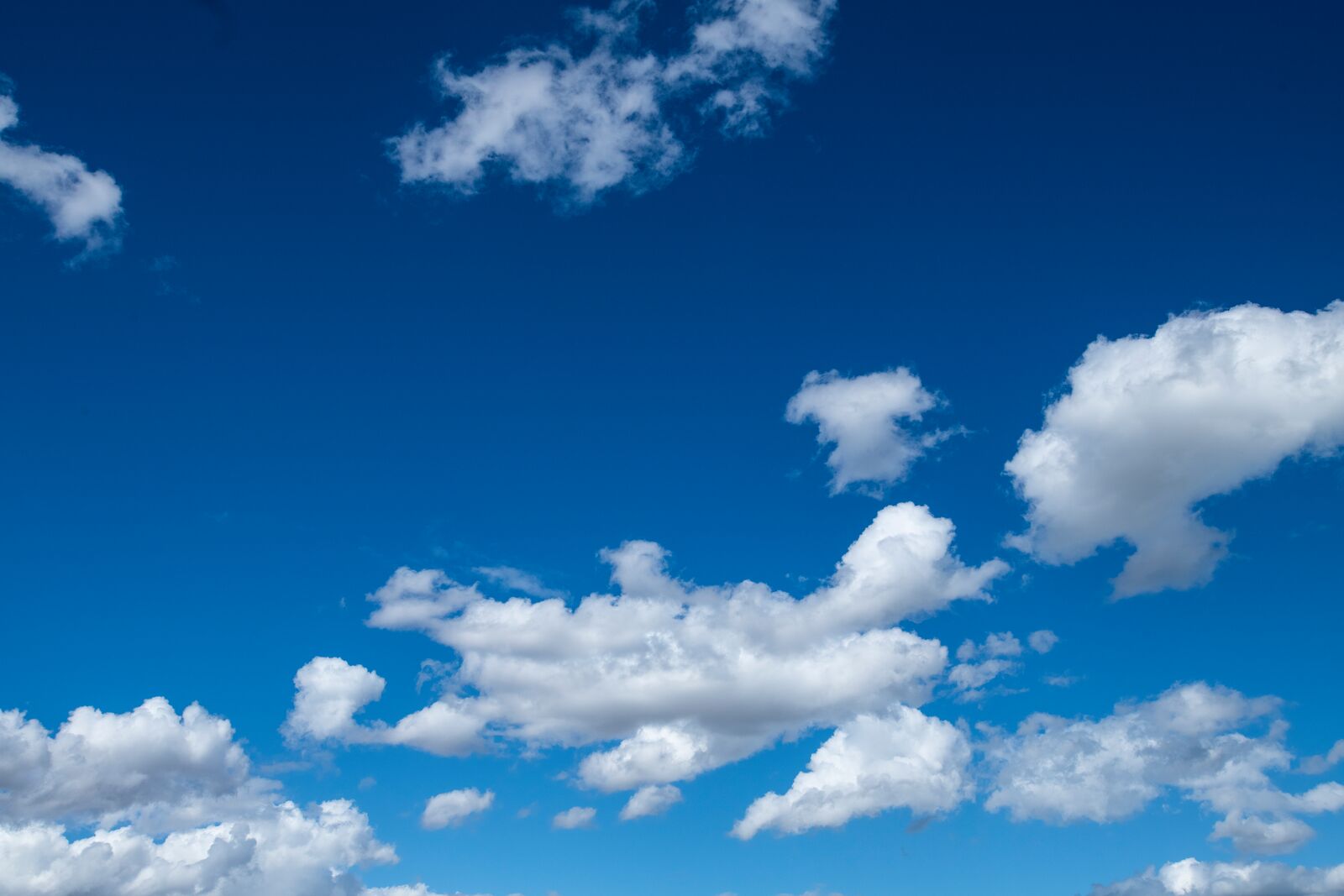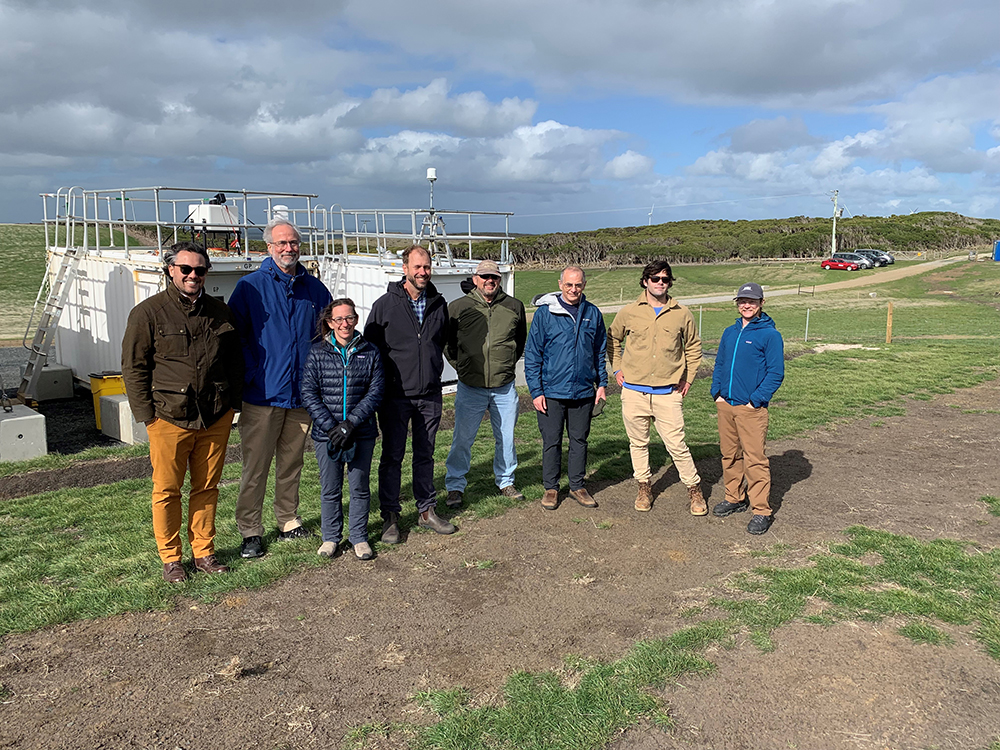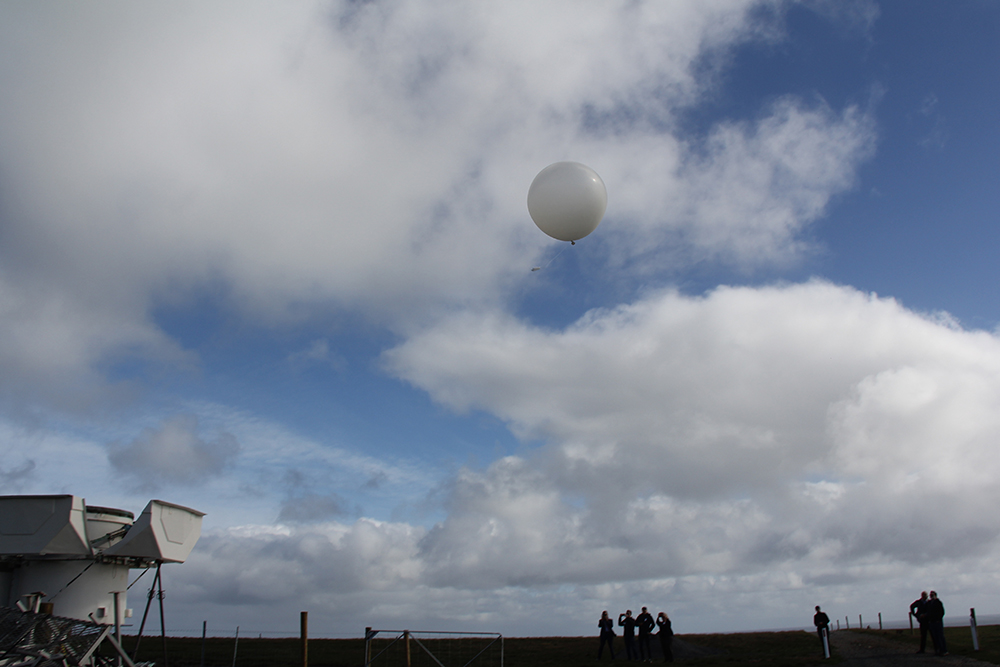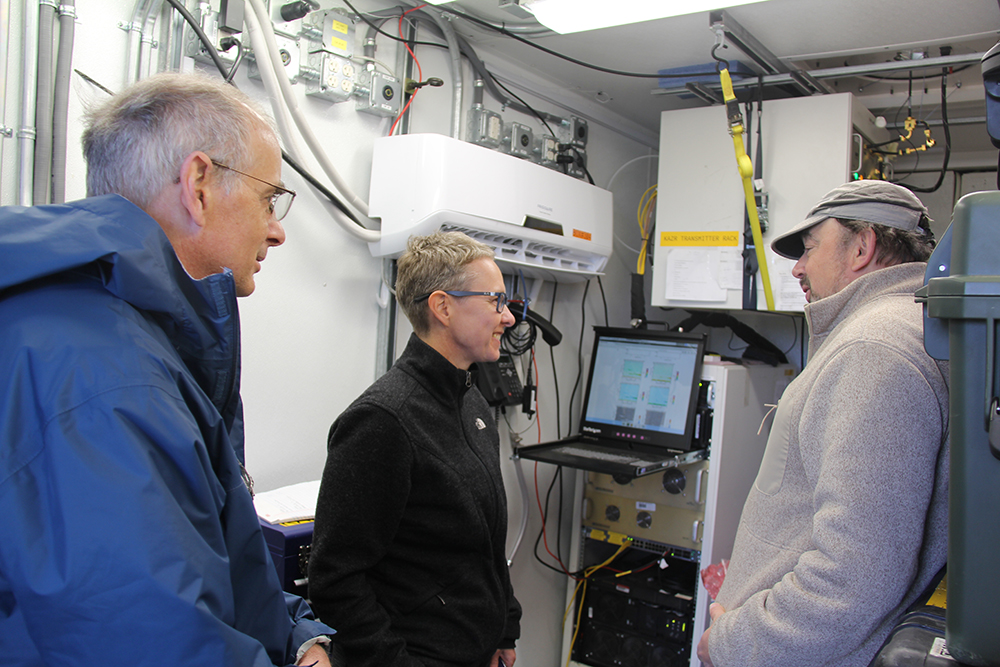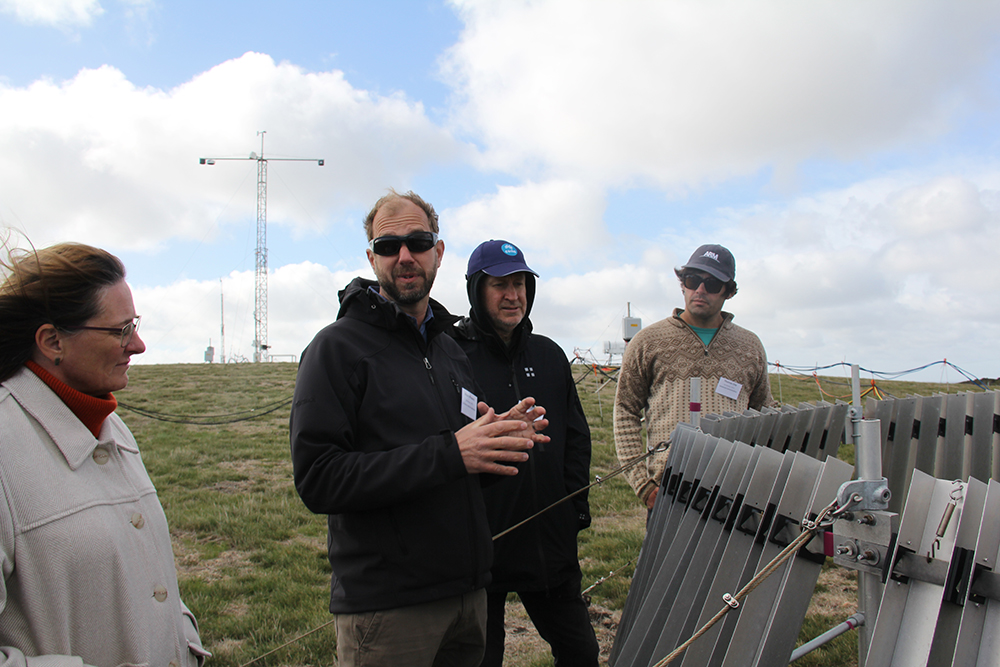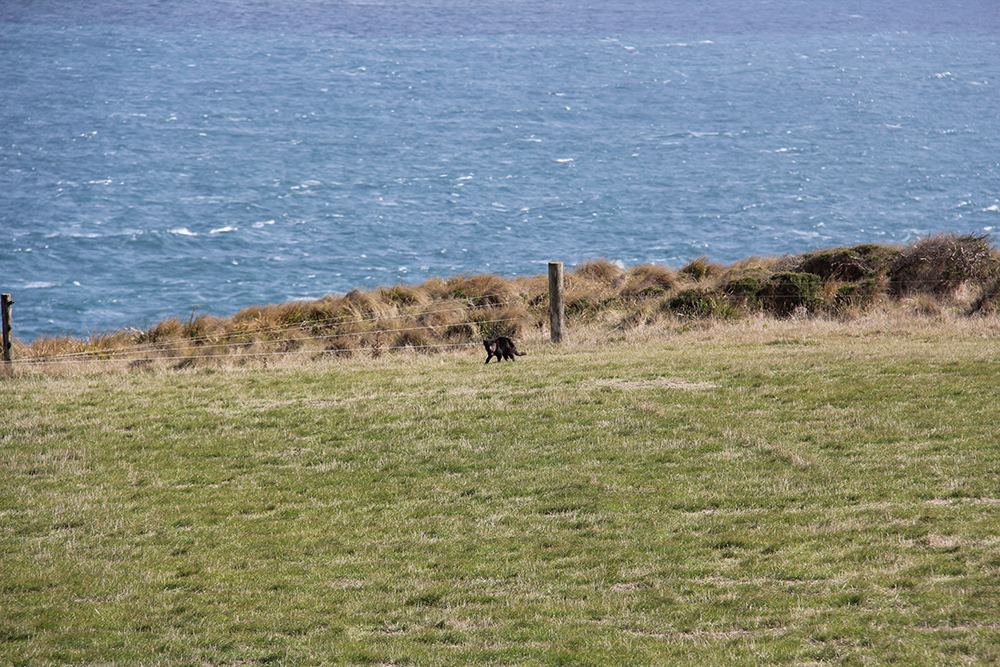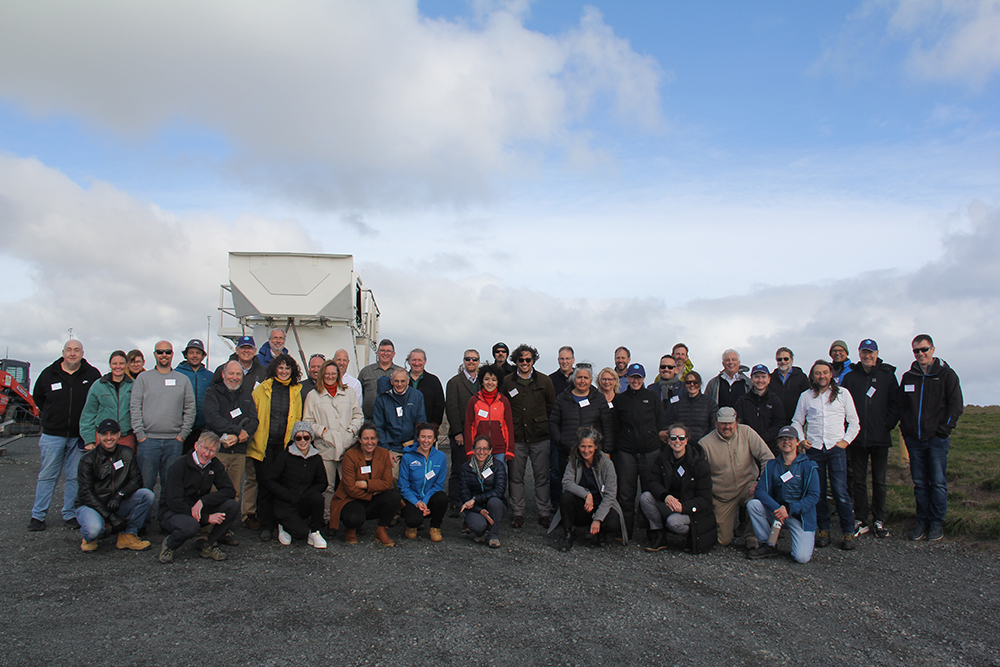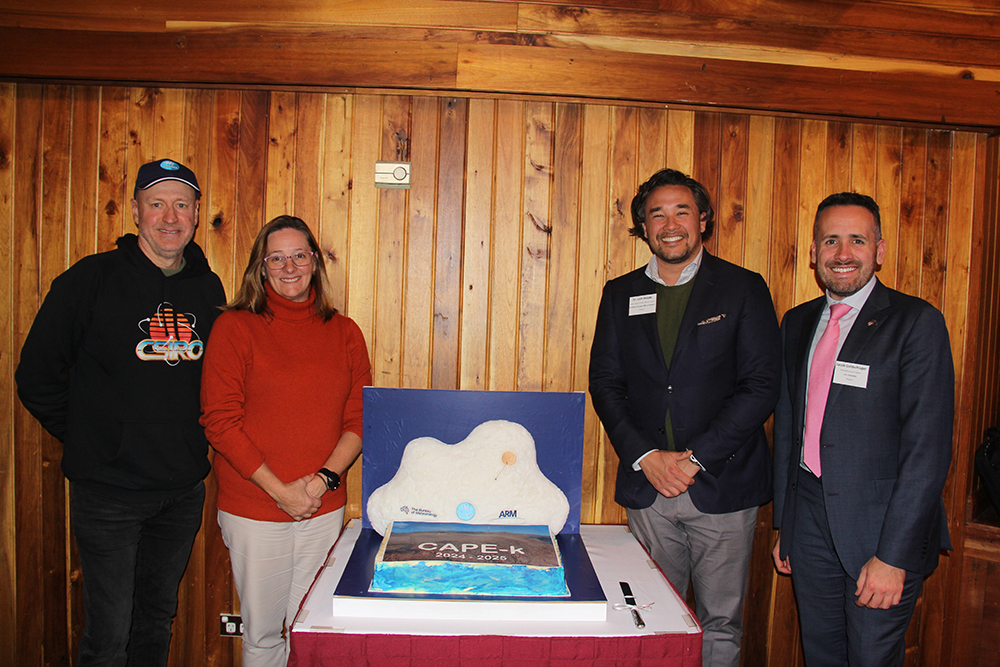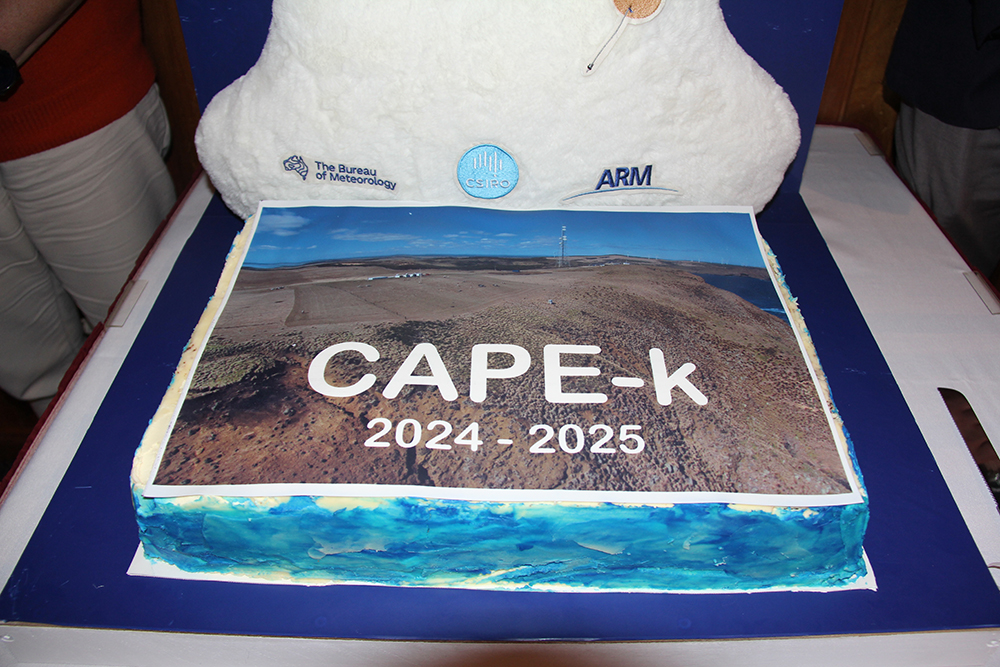Launch Event Celebrates Start of CAPE-k in Tasmania
Published: 23 May 2024
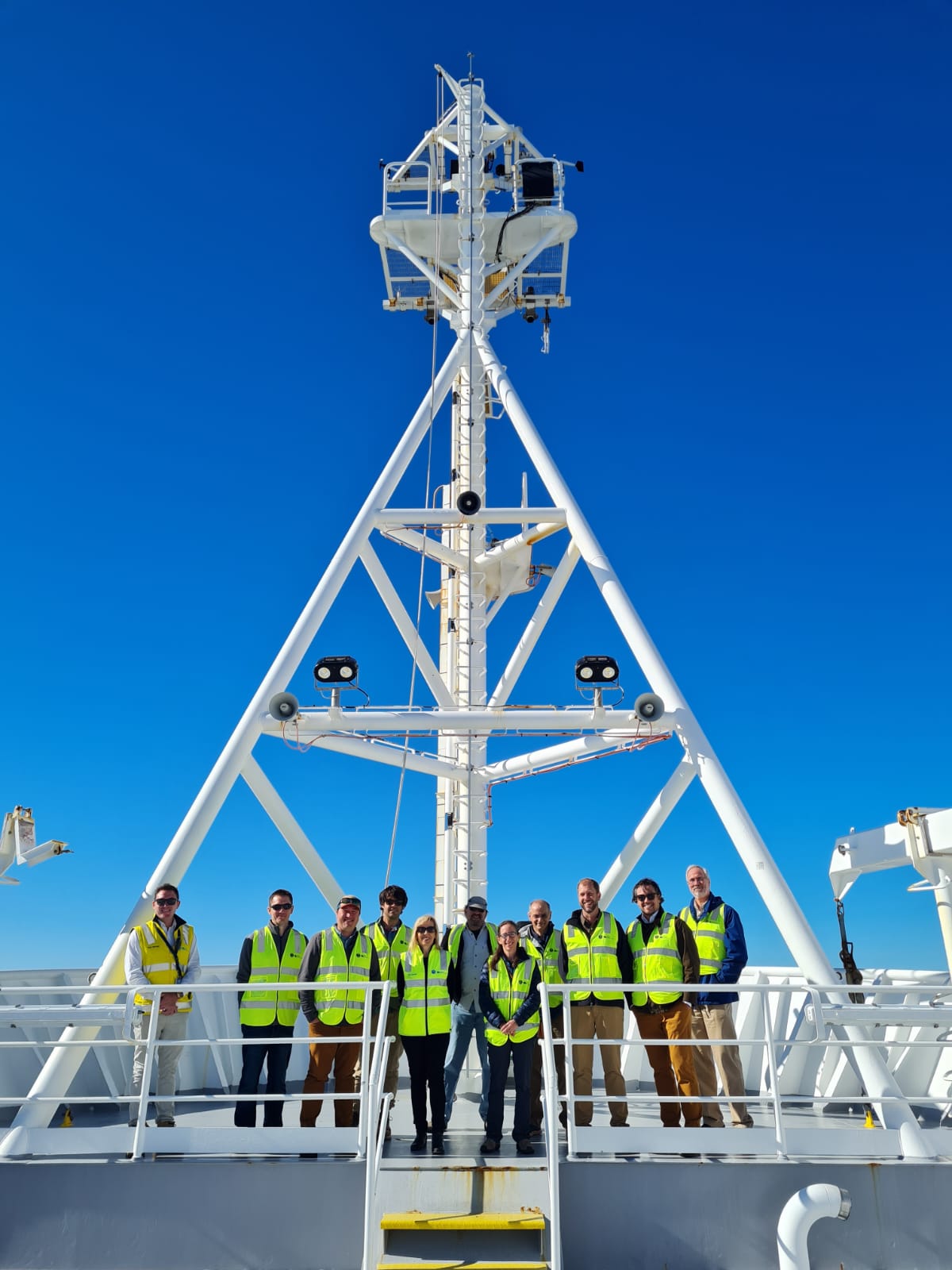
In April 2024, U.S. and Australian researchers, science officials, and dignitaries gathered in Tasmania to formally launch the Cloud And Precipitation Experiment at kennaook (CAPE-k).
The CAPE-k field campaign will collect data for 17 months on cloud and precipitation properties over the Southern Ocean, which has a large influence on global climate.
Representatives from the U.S. Department of Energy (DOE), Australian Bureau of Meteorology (BOM), and Commonwealth Scientific Industrial and Research Organisation (CSIRO) were among those who attended the CAPE-k launch event. DOE’s Atmospheric Radiation Measurement (ARM) user facility is conducting the campaign at the Kennaook / Cape Grim Baseline Air Pollution Station, which BOM and CSIRO jointly manage.
U.S. attendees at the launch event included DOE Office of Science Senior Advisor Josh Shiode; DOE ARM Program Manager Sally McFarlane; ARM Director Jim Mather; CAPE-k Co-Principal Investigator Gerald “Jay” Mace from the University of Utah; and staff from Los Alamos National Laboratory (LANL), which manages the ARM Mobile Facility deployed for CAPE-k. ARM Mobile Facility Site Manager Heath Powers was part of LANL’s contingent.
The travelers had a full itinerary during their time abroad.
First, on April 27, they visited CSIRO’s marine facility in Hobart and toured the research vessel Investigator, which will be part of a complementary campaign during CAPE-k in May 2025.
On April 29, they explored the CAPE-k site, where they caught up with site technicians Tom Day and Frank Zurek and met with scientists from the Kennaook / Cape Grim station.
More site tours took place the morning of April 30. That afternoon, guests assembled at the Tall Timbers Hotel in Smithton for the formal launch event. The event featured a welcome of dignitaries, messages of appreciation, science talks by Mace and co-investigator Melita Keywood of CSIRO, and an atmospheric-themed dessert for attendees to enjoy.
Before heading home, McFarlane, Mather, and Powers joined a group at the University of Melbourne, where they introduced Australian scientists to CAPE-k and learned about related Southern Ocean science.
The trip also gave some of the international visitors a rare view of wildlife native to the region, including platypuses, quolls, Tasmanian devils, and wombats.
A few weeks into campaign operations, CAPE-k has made the news several times, including segments by the Australian Broadcasting Corp. Check out the articles and videos collected so far.
|
|
|
|
|
|
|
|
|
|
|
|
More photos of the launch event and site tours are available in ARM’s CAPE-k Flickr album.
Keep up with the Atmospheric Observer
Updates on ARM news, events, and opportunities delivered to your inbox
ARM User Profile
ARM welcomes users from all institutions and nations. A free ARM user account is needed to access ARM data.


